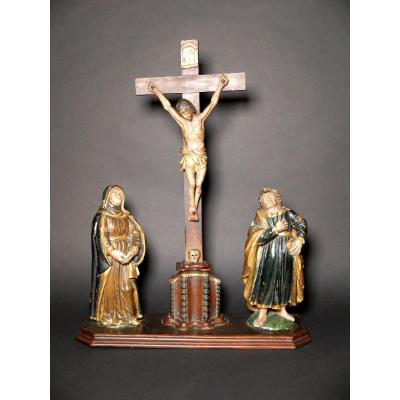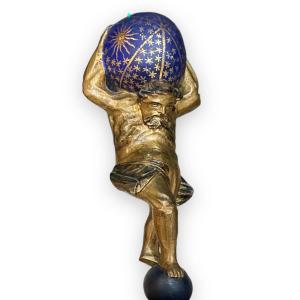The golden drapery covering the hips and other details, such as the golden footwear and the central bow of the drape demonstrate the artist’s ability to play with textures and finishes, creating an elegant and sophisticated contrast. The attention to detail in the face and the use of glass eyes testify to excellent craftsmanship, typical of Italian neoclassical sculpture.
The detailed hairstyle, the pendant earrings, the perfect anatomy and muscle tone of the body of the goddess suggest the artist’s desire to enrich this female semi-nude neoclassical divinity figure. This work is in good condition and comes from a private Italian collection.
The circular wooden base il probably later.
The iconographic setting of the Goddess Circe has, over the centuries, been represented in various artistic forms, from classical antiquity to the modern period; Sir Edgar Bertram Mackennal’s bronze sculpture of 1893 is an excellent example of how Circe has been reinterpreted in modern art, while retaining traditional iconographic elements. Mackennal, known for his elegant and symbolist sculptures, succeeds in capturing the essence of the figure of Circe, emphasizing both her beauty and her enchanting power.
In general, the depiction of Circe has often included elements such as the chalice, a symbol of her magical potions, and animals such as pigs, as a reminder of her transformations. These iconographic motifs refer to mythological tales, such as those found in Homer’s Odyssey, in which Circe plays a crucial role. Mackennal’s sculpture, while innovative in its approach, is part of a long tradition of depictions that have sought to communicate Circe’s dual aspect: the seductive and the threatening.


















































 Le Magazine de PROANTIC
Le Magazine de PROANTIC TRÉSORS Magazine
TRÉSORS Magazine Rivista Artiquariato
Rivista Artiquariato